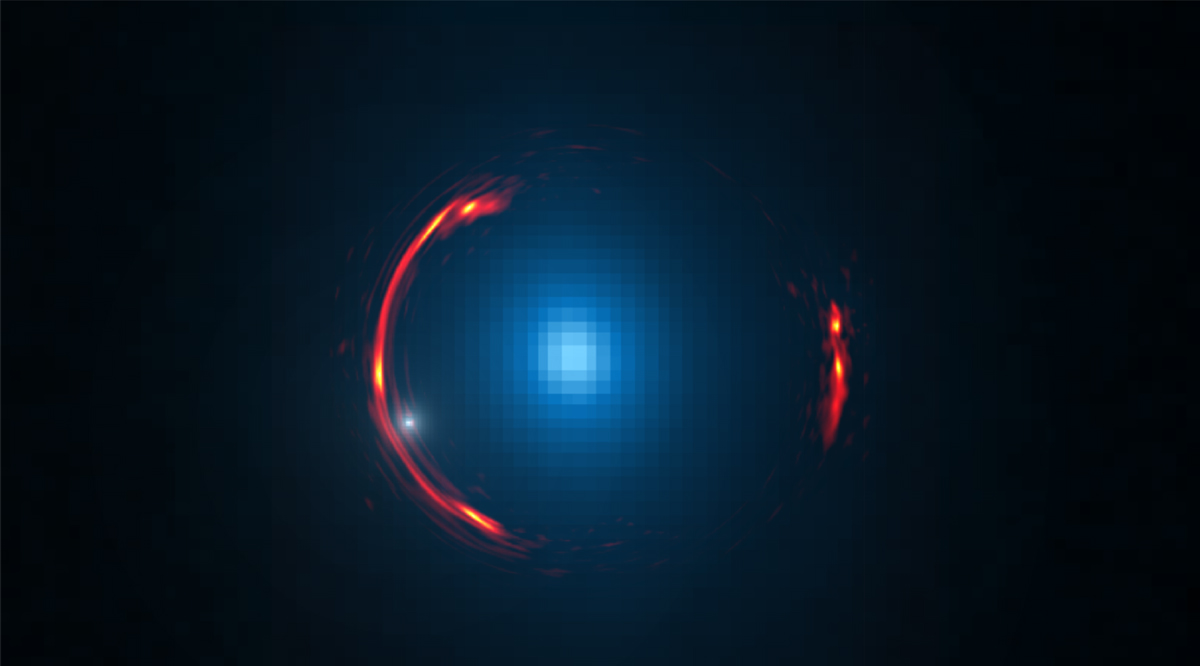
Currently the best place to search for life beyond the solar system. TRAPPIST-1 is an ultracool dwarf star -- it is much cooler and redder than the Sun and barely larger than Jupiter.

A new paper shows that the recent discoveries of exoplanets combined with a broader approach to the question makes it possible to assign a new empirically valid probability to whether any other advanced technological civilizations have ever existed.

The capture of a burst of high-energy neutrinos from a far-off galaxy heralds a new era in astrophysics.
The bold announcement from private spaceflight company occurred on April 27th, 2016 via their social feeds. They plan on launching the 'Red Dragon' spacecrafts atop Falcon 9 Heavy rockets, that are still under development.

Three colliding spiral galaxies 1.8 billion light years from Earth have produced a monster black hole weighing in at 3 billion times the mass of the Sun

Most of the cosmic rays that we detect at Earth originated relatively recently in nearby clusters of massive stars, according to new results from NASA's Advanced Composition Explorer (ACE) spacecraft.

A theoretical study has analyzed a model that saves special relativity and reconciles it with granularity by introducing small-scale deviations from the principle of locality demonstrating that it can be experimentally tested with great precision.

It takes a bold person to declare that interstellar travel is now within our grasp. Physicist Stephen Hawking has shown that he is just that, taking part in the Breakthrough Starshot initiative.

Subtle distortions hidden in ALMA’s stunning image of the gravitational lens SDP.81 are telltale signs that a dwarf dark galaxy is lurking in the halo of a much larger galaxy nearly 4 billion light-years away. This discovery paves the way for ALMA to find many more such objects and could help astronomers address important questions on the nature of dark matter.In 2014, as part of ALMA’s Long Baseline Campaign, astronomers studied a variety of astronomical objects to test the telescope's new, high-resolution capabilities.

The most precise measurement ever made of the current rate of expansion of the Universe has been achieved by physicists in the US, and there's a problem: the Universe is expanding 8 percent faster than our current laws of physics can explain.
NASA engineers are conducting tests to develop models for the Heliopause Electrostatic Rapid Transport System (HERTS) concept. An electric sail could potentially send scientific payloads to the edge of our solar system, the heliopause, in less than 10 years.

It's an exciting time to be alive if you're keen to watch humans get off this planet. A private space race is taking off, opening new pathways to orbit while sparking a burst of technological innovation. Even better, thanks to the magic of internet live streaming, we're watching history unfold in real time.
SpaceX Falcon 9 successfully landed on an ocean barge!

Crisp, clear images of a "hot Jupiter" system captured by a physicist were vital in determining that a newly found planet inhabits a three-star system, a phenomenon documented only a few times before.

Astronomers find a monster black hole 17 billion times more massive than the sun, raising suspicions supermassive black holes may be more common than first thought.